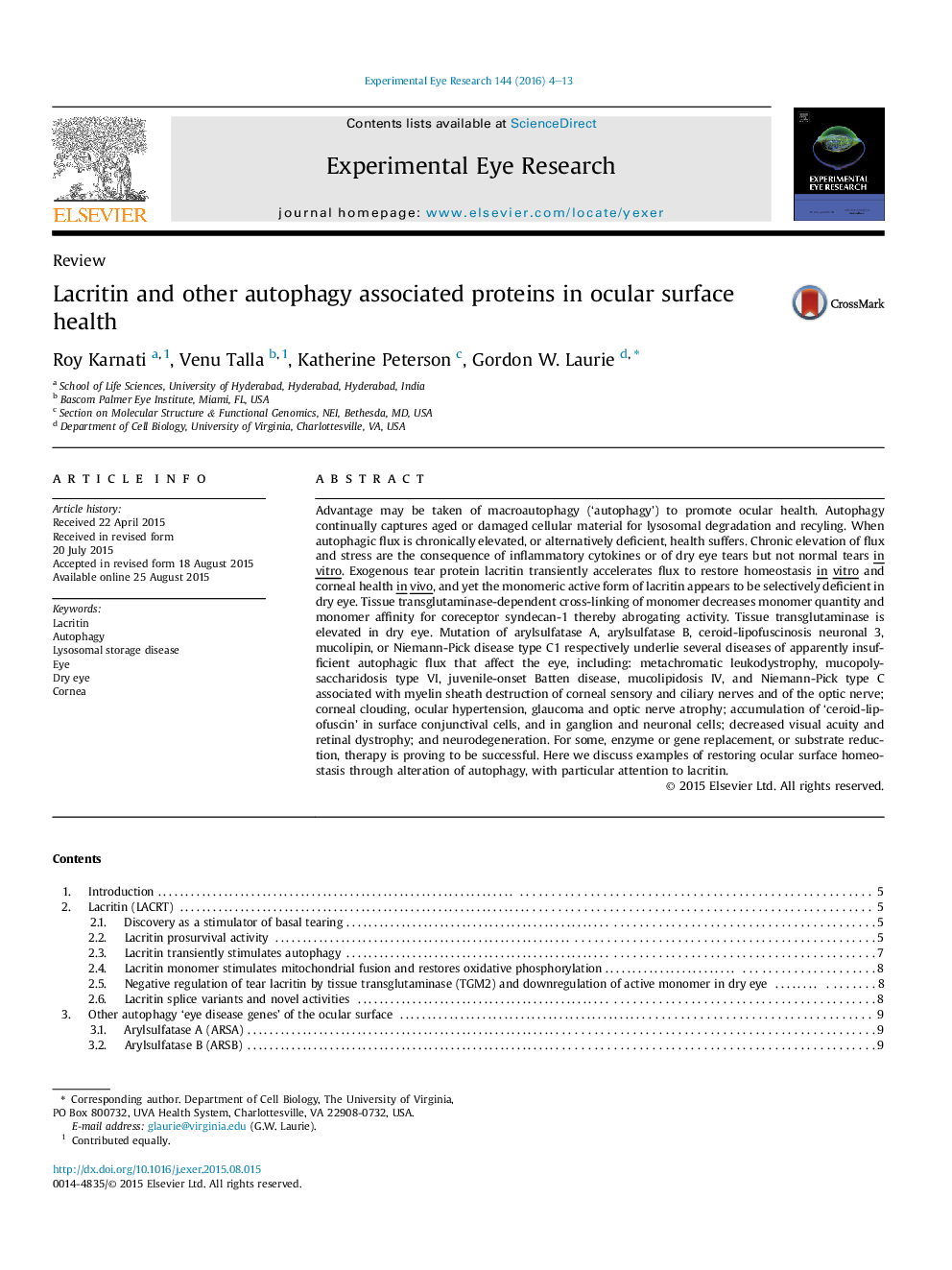| Article ID | Journal | Published Year | Pages | File Type |
|---|---|---|---|---|
| 4011076 | Experimental Eye Research | 2016 | 10 Pages |
Advantage may be taken of macroautophagy (‘autophagy’) to promote ocular health. Autophagy continually captures aged or damaged cellular material for lysosomal degradation and recyling. When autophagic flux is chronically elevated, or alternatively deficient, health suffers. Chronic elevation of flux and stress are the consequence of inflammatory cytokines or of dry eye tears but not normal tears invitro. Exogenous tear protein lacritin transiently accelerates flux to restore homeostasis invitro and corneal health invivo, and yet the monomeric active form of lacritin appears to be selectively deficient in dry eye. Tissue transglutaminase-dependent cross-linking of monomer decreases monomer quantity and monomer affinity for coreceptor syndecan-1 thereby abrogating activity. Tissue transglutaminase is elevated in dry eye. Mutation of arylsulfatase A, arylsulfatase B, ceroid-lipofuscinosis neuronal 3, mucolipin, or Niemann-Pick disease type C1 respectively underlie several diseases of apparently insufficient autophagic flux that affect the eye, including: metachromatic leukodystrophy, mucopolysaccharidosis type VI, juvenile-onset Batten disease, mucolipidosis IV, and Niemann-Pick type C associated with myelin sheath destruction of corneal sensory and ciliary nerves and of the optic nerve; corneal clouding, ocular hypertension, glaucoma and optic nerve atrophy; accumulation of ‘ceroid-lipofuscin’ in surface conjunctival cells, and in ganglion and neuronal cells; decreased visual acuity and retinal dystrophy; and neurodegeneration. For some, enzyme or gene replacement, or substrate reduction, therapy is proving to be successful. Here we discuss examples of restoring ocular surface homeostasis through alteration of autophagy, with particular attention to lacritin.
Graphical abstractFigure optionsDownload full-size imageDownload high-quality image (267 K)Download as PowerPoint slide
